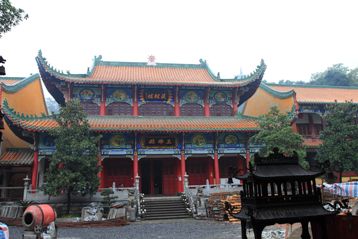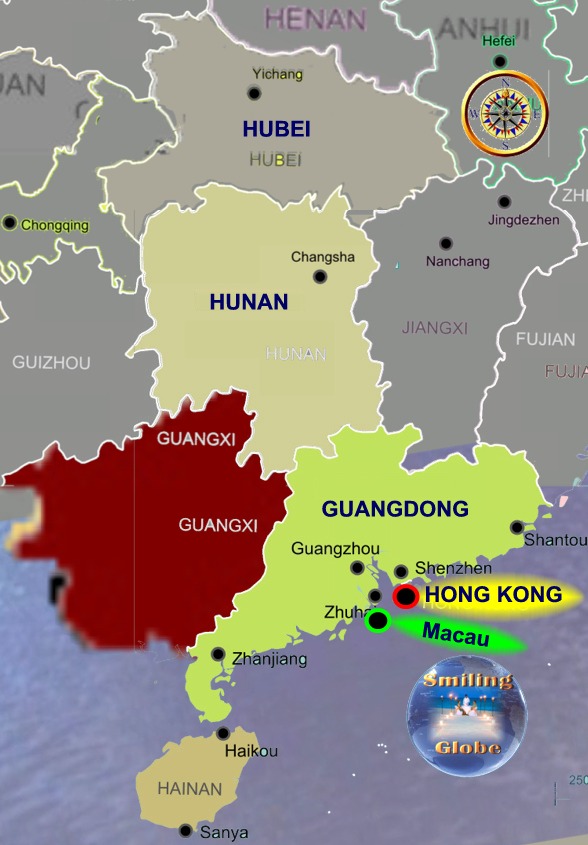Read more about
Guangzhou Guangdong.South Central China
South Central China
Last updated Saturday, 1 Feb 2020
The Wuhan coronavirus has officially spread to every region in China
The deadly coronavirus that originated in Wuhan, China, has now spread to every region of the country.
China's National Health Commission confirmed a case of the virus in the southwestern frontier region of Tibet on Thursday. Tibet is the last of China's 34 regions to see someone infected by 2019-nCoV.
The death toll is still climbing. As of Thursday at least 195 people had died of the virus, all of them in China.
There are now 7711 confirmed cases of infection on the Chinese mainland, with 10 in Hong Kong, seven in Macau, and eight in Taiwan.
Fears of the spreading virus led airlines to reduce flights to China and global companies to restrict employee travel to the country.
The Hubei province health authority said in a statement that further 45 people had died.
The virus emerged late last year in Wuhan, Hubei’s capital and a major transportation hub, and much of the province has been under virtual lockdown as China seeks to contain the virus to stop it from spreading further.
Hubei is a landlocked province in Central China. The name "Hubei" means "north of the lake", referring to its position north of Dongting Lake. The provincial capital, Wuhan, serves as a major transportation thoroughfare and the political, cultural, and economic hub of Central China.
 |
Thousands of lakes dot the landscape of Hubei's Jianghan Plain, giving Hubei the name of "Province of Lakes"; the largest of these lakes are Liangzi Lake and Hong Lake. The numerous hydrodams have created a number of large reservoirs, the largest of which is the Danjiangkou Reservoir on the Han River, on the border between Hubei and Henan.
Hubei is officially abbreviated to an ancient name associated with the eastern part of the province since the State of of the Western Zhou dynasty. The province borders Henan to the north, Anhui to the east, Jiangxi to the southeast, Hunan to the south, Chongqing to the west, and Shaanxi to the northwest. The high-profile Three Gorges Dam is located at Yichang, in the west of the province.
Hubei has a humid subtropical climate with four distinct seasons. Winters are cool to cold, with average temperatures of 1 to 6 °C in January, while summers are hot and humid, with average temperatures of 24 to 30 °C in July; punishing temperatures of 40 °C or above are widely associated with Wuhan, the provincial capital. The mountainous districts of western Hubei, in particular Shennongjia, with their cooler summers, attract numerous visitors from Wuhan and other lowland cities.
The Ming dynasty drove out the Mongols in 1368. Their version of Huguang province was smaller, and corresponded almost entirely to the modern provinces of Hubei and Hunan combined. While Hubei was geographically removed from the centers of the Ming power. During the last years of the Ming, today's Hubei was ravaged several times by the rebel armies of Zhang Xianzhong and Li Zicheng
| Region |
Area |
Population |
Density |
|
| Guangdong |
179,800 km2 |
105,940,000 |
590/km2 |

|
Cities: Guangzhou
(Capital). Guangdong faces the South China Sea to the south and has a total of 4,300 km (2,700 mi) of coastline. Leizhou Peninsula is on the southwestern end of the province. There are a few inactive volcanoes on Leizhou Peninsula. The Pearl River Delta is the convergent point of three upstream rivers: the East River, North River, and West River. The river delta is filled with hundreds of small islands.
|
| Guangxi |
236,700 km2 |
46,800,000 |
207/km2 |
Cities: Nanning(the
Capital City), Liuzhou, Guilin, Beihai. Guangxi has a short coastline on the Gulf of Tonkin. Important seaports include Beihai, Qinzhou and Fangchenggang.
Along the border with Vietnam there is the Detian waterfall (pinyin: Dé Ti?n Pùbù), which separates the two countries. |
| Hunan |
210,000 km2 |
71,356,000 |
340/km² |
Cities: Changsha(Capital).
Hunan borders Hubei in the north, Jiangxi to the east,
Guangdong to the southeast,
Guangxi
to the southwest, Guizhou to the west, and Chongqing to the northwest. The capital is
Changsha.
|
| Hubei |
185,900 km2 |
57,237,740 |
310/km² |
Cities: The provincial capital is Wuhan
with 10,220,000 Inhabitants. At the foot of the Three Gorges and the Three Gorges Dam
on the Yangtze river lies Wuhan, the Capital city of Hubei province,
with its famous Yellow Crane Tower. In Hubei the traveller can see
Wudang Mountain and its temples as well as Shennongjia scenic area which
contains many wild yellow monkeys.
|
| Hong
Kong |
1,104 km2 |
7,234,800 |
6,544/km² |
Cities: Hong Kong is a Special Administrative Region of the People's Republic of
China,
Hong Kong is
the Capital and a city on the southern coast of China at the Pearl River East.
|
| Hainan |
35,400 km2 |
8,900,000 |
250/km² |
Cities: The capital of Hainan Island is Haikou with 2,046,189 Inhabitants
|
| Macau
(Macao) |
31.3 km2 |
624,000 |
18,568/km² |
Cities: The capital of Macau Island is Macau
with 624,000 Inhabitants
|
South Central China consists of six provinces or autonomous regions plus two special administration regions:
Guangdong,
Hainan,
Hubei,
Hunan,
Guangxi,
Hong Kong and
Macau.
The south contains the richest areas of China: Guangdong, Hong Kong and
Macau. The centre is the very heart of China with ancient beauty. Hainan
in the south is a popular destination for palm trees, beaches and sun.
One of the most prosperous and developed areas of China. Guangdong's capital,
Guangzhou, was once know as Canton and has been
China's main trading centre for hundreds of years. The southern cities
of Shenzhen and Zhouhai border
Hong Kong
and Macau. The strange
buildings of Kaiping Diaolou are a UNESCO World Heritage Site.
See ratings  af South Central China , Do you have rice or praise for this Bed and Breakfast, Write your review
af South Central China , Do you have rice or praise for this Bed and Breakfast, Write your review 